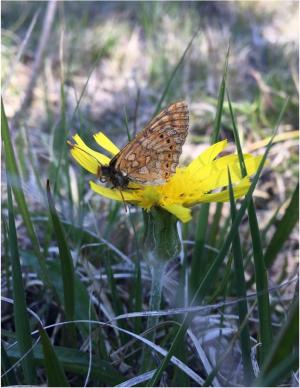Conclusion
In conclusion, adults had a preference for areas with less forest cover but a presence of bushes. Egg-laying females preferred to lay eggs in areas with large, and a high abundance of, host plants. However, the area surrounding the host plant was important in her choice as well. Host plants with less grass cover surrounding it, with less tree crown cover in a sourthern direction and with large tussocks nearby were often selected for ovipositng. Larvae also preferred large host plant with less grass cover surrounding them and with tussocks present. Further, larvae were more likely present in areas with more host plant stalks.

Conservation implications
Grazing negatively impacted adult and larval density, moreover, larval survival was lower in grazed habitats. Together this indicates that the grazing pressure was too high in the grazed habitat. Considering the slow growth rate of nutrient-poor grasslands, I suggest using rotational grazing or mowing, where some areas are spared from this management for longer periods of time, in particular areas with large-sized, and a higher abundance of, host plants. Further, management should promote heterogeneous habitats with different microtopographies, especially since the importance of such habitats may increase in the future to help buffer against climatic change.
Responsible for this page:
Director of undergraduate studies Biology
Last updated:
06/08/21
